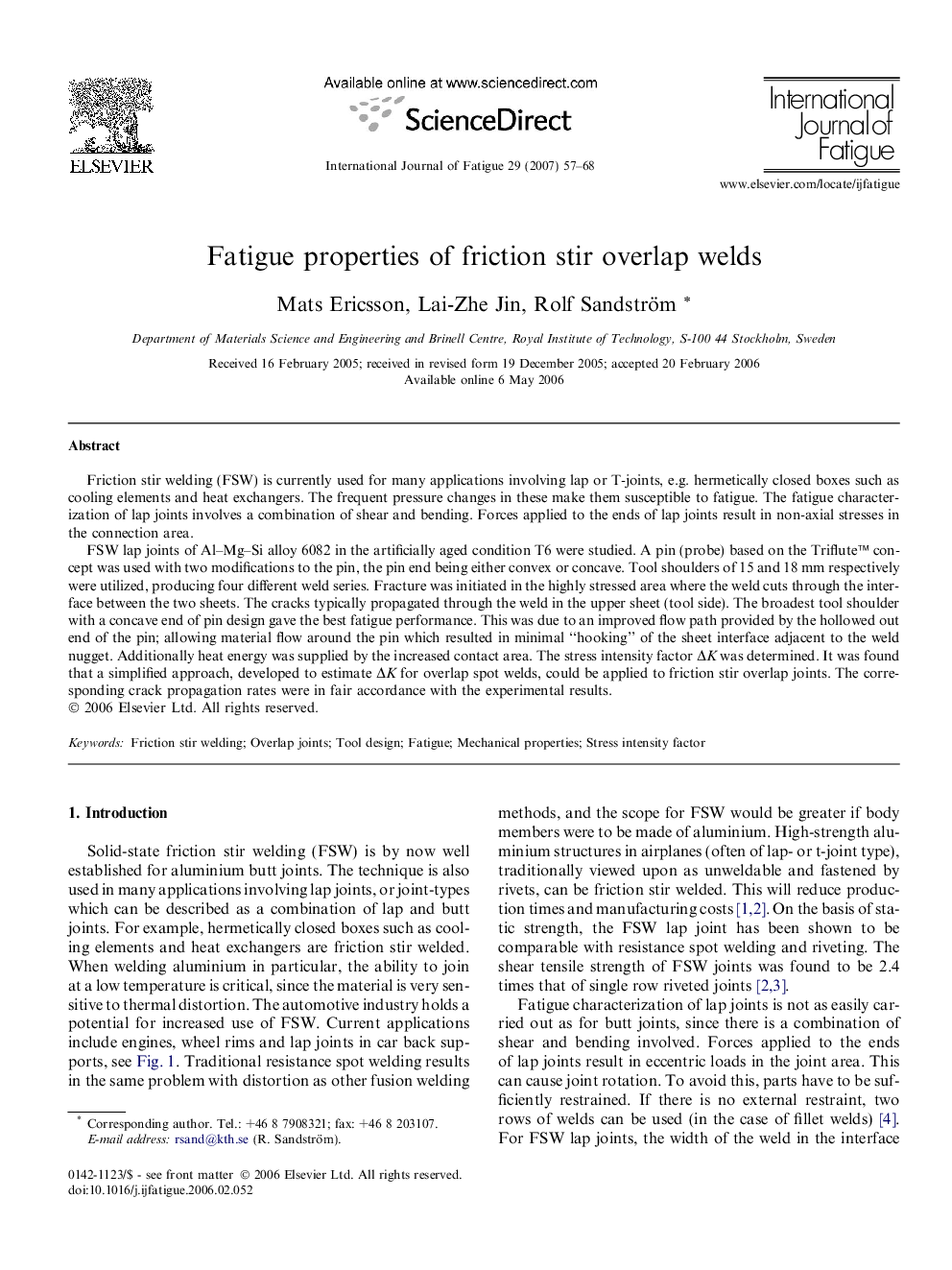| Article ID | Journal | Published Year | Pages | File Type |
|---|---|---|---|---|
| 777411 | International Journal of Fatigue | 2007 | 12 Pages |
Friction stir welding (FSW) is currently used for many applications involving lap or T-joints, e.g. hermetically closed boxes such as cooling elements and heat exchangers. The frequent pressure changes in these make them susceptible to fatigue. The fatigue characterization of lap joints involves a combination of shear and bending. Forces applied to the ends of lap joints result in non-axial stresses in the connection area.FSW lap joints of Al–Mg–Si alloy 6082 in the artificially aged condition T6 were studied. A pin (probe) based on the Triflute™ concept was used with two modifications to the pin, the pin end being either convex or concave. Tool shoulders of 15 and 18 mm respectively were utilized, producing four different weld series. Fracture was initiated in the highly stressed area where the weld cuts through the interface between the two sheets. The cracks typically propagated through the weld in the upper sheet (tool side). The broadest tool shoulder with a concave end of pin design gave the best fatigue performance. This was due to an improved flow path provided by the hollowed out end of the pin; allowing material flow around the pin which resulted in minimal “hooking” of the sheet interface adjacent to the weld nugget. Additionally heat energy was supplied by the increased contact area. The stress intensity factor ΔK was determined. It was found that a simplified approach, developed to estimate ΔK for overlap spot welds, could be applied to friction stir overlap joints. The corresponding crack propagation rates were in fair accordance with the experimental results.
